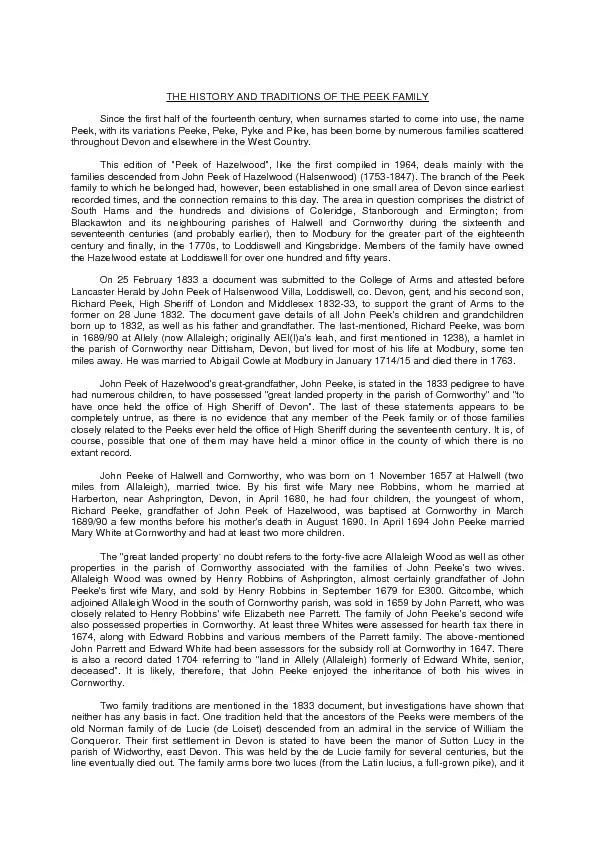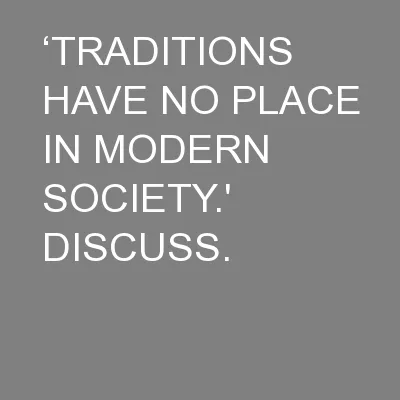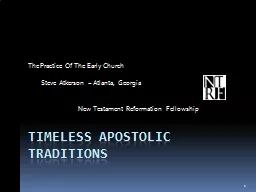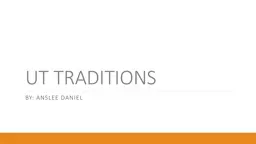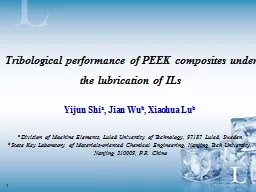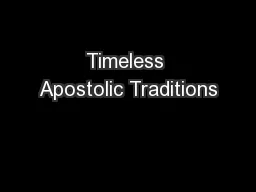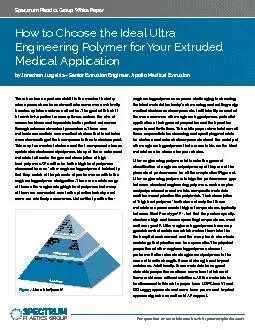PDF-THE HISTORY AND TRADITIONS OF THE PEEK FAMILY
Author : pasty-toler | Published Date : 2016-07-07
Since the first half of the fourteenth century when surnames started to come into use the name Peek with its variations Peeke Peke Pyke and Pike has been borne by
Presentation Embed Code
Download Presentation
Download Presentation The PPT/PDF document "THE HISTORY AND TRADITIONS OF THE PEEK F..." is the property of its rightful owner. Permission is granted to download and print the materials on this website for personal, non-commercial use only, and to display it on your personal computer provided you do not modify the materials and that you retain all copyright notices contained in the materials. By downloading content from our website, you accept the terms of this agreement.
THE HISTORY AND TRADITIONS OF THE PEEK FAMILY: Transcript
Download Rules Of Document
"THE HISTORY AND TRADITIONS OF THE PEEK FAMILY"The content belongs to its owner. You may download and print it for personal use, without modification, and keep all copyright notices. By downloading, you agree to these terms.
Related Documents

